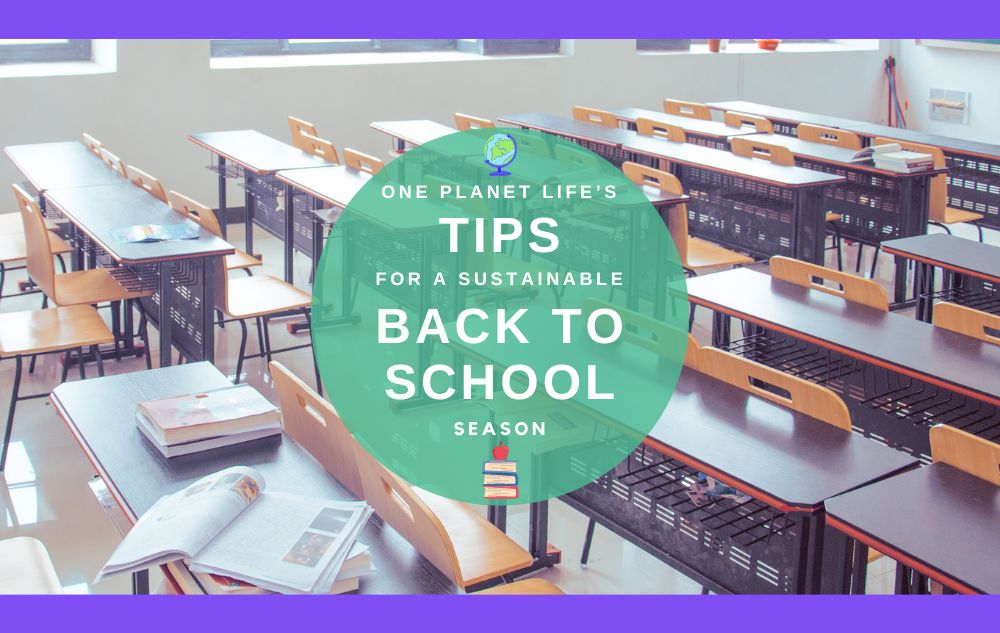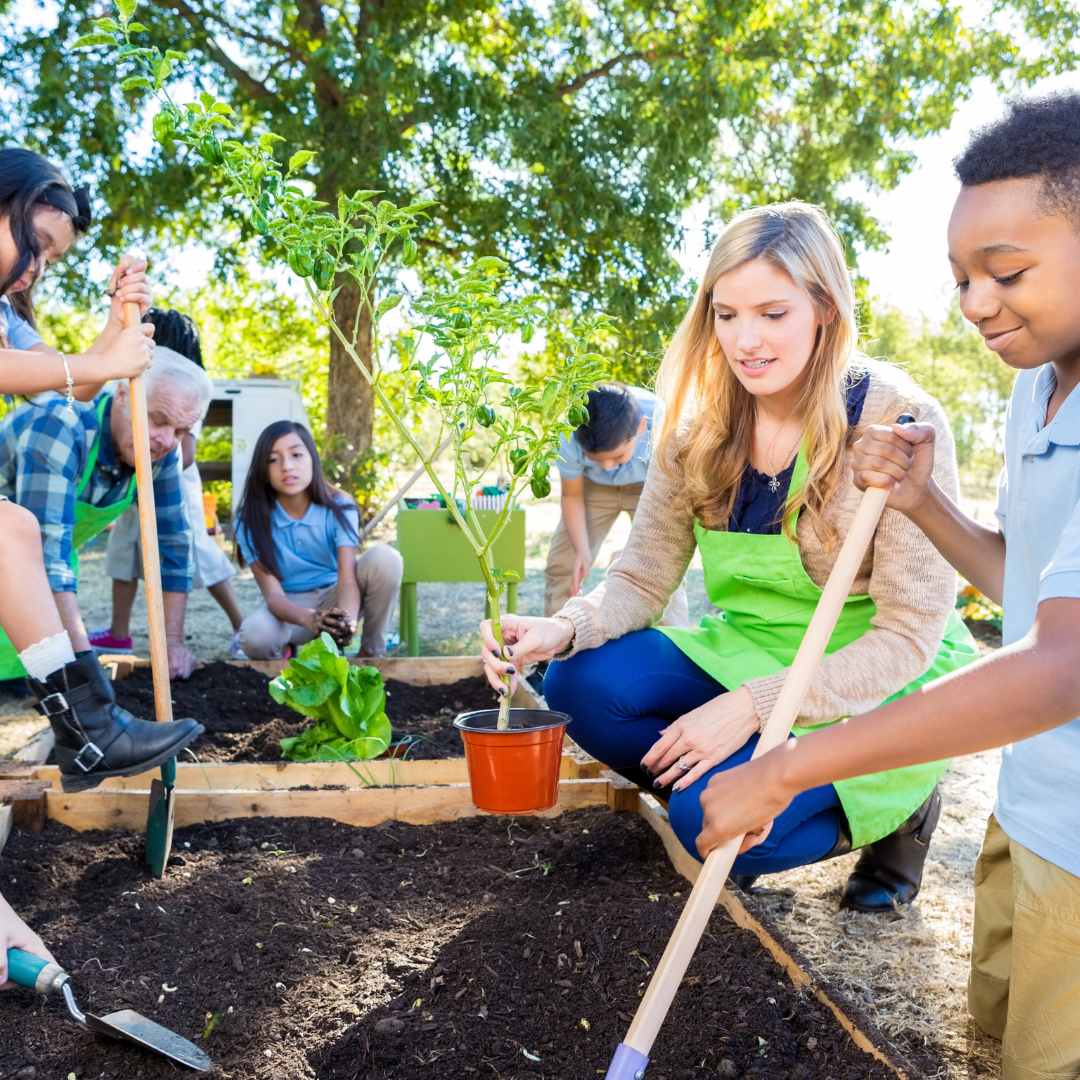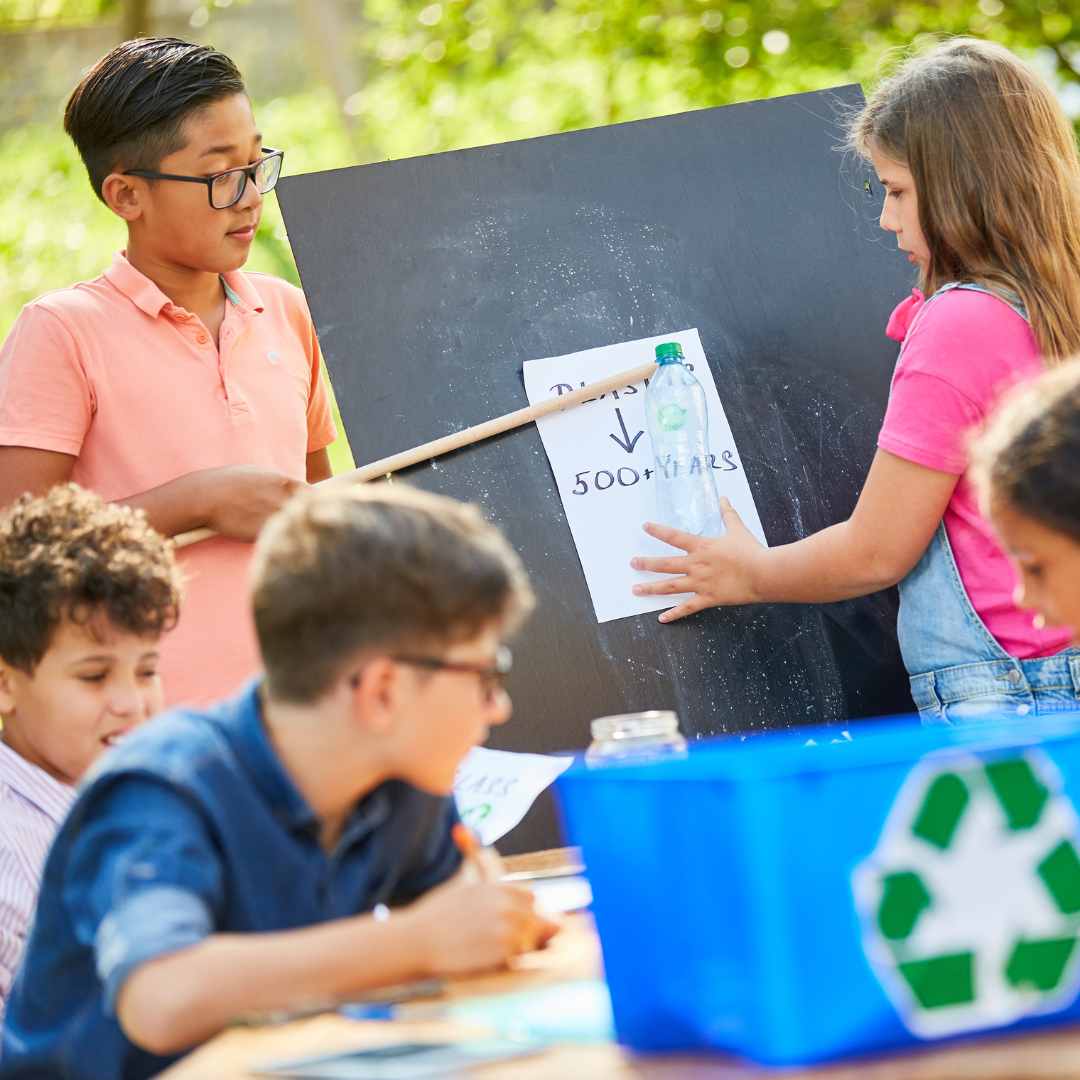Greening the Back-to-School Routine: One Planet Life’s Eco-Friendly Tips for a Sustainable Season
The back-to-school season brings excitement and anticipation as summer break comes to an end. But amidst the flurry of preparations, it’s essential to not lose sight of our commitment to sustainability.
Incorporating eco-friendly practices into the back-to-school routine can have a profound impact on the environment and set a positive example for future generations. While it may seem like a challenge, there are so many easy ways for students and parents to adopt greener habits without compromising their busy schedules.
OPL’s comprehensive guide delves into eco-conscious education, offering actionable insights to ensure a greener return to classrooms.
Explore ways to make each step of the back-to-school transition more environmentally mindful. Commit to a renewed focus on eco-friendly habits, and navigate necessary school supplies with a sustainable twist. Discover how to embrace sustainable transportation alternatives that reduce your carbon footprint. Learn new strategies for minimizing lunchtime waste with smart, planet-friendly packing, and let your students express their individuality through sustainable back-to-school fashion.
We also shed light on how extracurricular activities help foster a deeper connection with nature and the community. And finally, we discuss the power of community engagement and how families, schools, and neighborhoods can collaborate to build a more sustainable future. Join us in embracing a new academic year with a dedication to sustainability that enriches both minds and the environment.
One Planet Life’s Eco-Friendly Tips for a Sustainable Back-to-School Season:
Overcoming the Summer Slump and Rebuilding Eco-Friendly Habits
Before diving into the actionable steps, let’s revisit the compelling benefits of eco-friendly practices. From reducing our carbon footprint to preserving natural resources, sustainable choices have far-reaching implications for the environment. However, it’s common to experience a “summer slump” in eco-friendly behaviors due to the relaxed routines and vacation mindset. Understanding this phenomenon allows us to approach the back-to-school season with renewed dedication to sustainability.
Eco-Friendly School Supplies: A Greener Approach to Learning
One of the most impactful ways students and parents can embrace sustainability is through their school supplies choices. Traditional school supplies often carry a significant environmental burden due to their production and disposal processes. Toxicity is also a concern.
In a 2018 study by the non-profit group U.S. PIRG Education, researchers conducted laboratory tests for toxic chemicals in 27 popular school supplies. The study found Playskool crayons from Dollar Tree that contained asbestos, a 3-ring binder from Dollar Tree that contained high levels of phthalates, and two dry-erase markers containing BTEX compounds. It highlighted two water bottles that have been recalled due to high levels of lead.
Additionally, paper consumption is increasing globally at an unsustainable rate. Demand for paper is expected to double between 2005 and 2030, according to The World Counts. The annual production of paper reaches an average of 420 million tons, which corresponds to two pieces of paper for every person on the planet every single hour. Moreover, 42% of all trees harvested globally are used for paper production. About 93% of raw material for paper comes from trees. On average, one tree produces the equivalent of about 8,000 pages.
Making sustainable choices when buying school essentials is a crucial step for reducing our ecological footprint and keeping our children safe.
By opting for environmentally friendly stationery, such as recycled paper and non-toxic markers, we can minimize the strain on forests and limit the release of harmful chemicals into the environment. Additionally, exploring digital alternatives for note-taking and reading materials can significantly reduce paper usage. When printing is necessary, encouraging double-sided printing. Reusing paper for scrap notes can also minimize waste.
Another aspect to consider is reusing and repurposing old supplies. By encouraging children to repurpose last year’s materials or sharing items with siblings, we promote resource conservation and a sense of mindful consumption. Supporting sustainable brands and initiatives that prioritize eco-friendly manufacturing and packaging practices can also make a tangible difference in promoting greener school supply options.
Using energy-efficient devices and equipment can further reduce environmental impact. Reminding students to turn off electronic devices when not in use and optimize power settings can lead to substantial energy savings. Promoting efficient time management can also play a role in sustainability by reducing the need for last-minute printing and resource usage.
Sustainable Transportation for Students
Transportation choices significantly impact our carbon footprint, and this extends to the daily commute to school. Traditional commuting methods, such as private car usage, contribute to air pollution and traffic congestion. To reduce the ecological impact, it’s essential to encourage eco-friendly transportation options for students.
Walking or cycling to school not only reduces emissions but also promotes physical activity and a connection with nature.
For longer distances, public transportation or carpooling with fellow students can be excellent alternatives. By establishing eco-conscious commuting habits among parents and students, we can collectively work toward creating cleaner and healthier communities.
For districts that offer school bus commutes, advocating for the switch to electric buses can save districts money over time and contribute much less emissions than traditional diesel buses. Replacing all school buses with electric buses could prevent over 5.3 million tons of greenhouse gas each year, according to a study by The Aspen Institute. Districts could also save $2,000 in fuel and $4,400 in maintenance costs, on average, annually.
Minimizing Waste: Sustainable Lunch Options
The issue of single-use plastic and disposable packaging has become a pressing environmental concern. One area where this problem is particularly noticeable is school lunches. Parents can take proactive steps to minimize waste by opting for waste-free lunches with reusable containers and utensils. Investing in high-quality, durable lunch boxes and water bottles can make a significant impact in reducing single-use plastic consumption.
Reusables can also save you money in the long term, with estimates of packing a disposable lunch (plastic baggies, plastic spoon, juice bag) costing $4.02 per day compared to a waste-free lunch packed with reusables at $2.65 per day.
Additionally, embracing plant-based and locally sourced food choices for school lunches has environmental benefits. By reducing the demand for meat and supporting local farmers, we can mitigate the environmental impact of food production and transportation. Moreover, teaching children about composting and reducing food waste can instill a sense of responsibility toward conserving resources.
Eco-Friendly Back-to-School Fashion
The fashion industry’s environmental impact is well-documented, with fast fashion trends contributing to textile waste and pollution. As students prepare their back-to-school wardrobe, parents can encourage eco-friendly fashion choices that prioritize sustainability and ethical practices.
One practical approach is thrift shopping and exploring second-hand clothing options. Thrift stores offer a treasure trove of stylish, unique pieces that are affordable and eco-friendly.
Supporting sustainable and ethical fashion brands that are devoted to using eco-friendly materials and fair labor practices is another way to make a positive impact. Additionally, recycling and upcycling old clothing can bring new life into fashion while reducing waste.
Eco-Friendly Extracurricular Activities
Extracurricular activities provide an excellent opportunity for students to engage with their passions and interests outside the classroom. Students and parents can make conscious choices when considering extracurricular options to prioritize sustainability.
Consider eco-friendly extracurricular programs by joining clubs or groups focused on environmental awareness and conservation. Participate in events or projects that promote sustainable practices, which can foster a sense of purpose and responsibility in students.
Moreover, parents can actively support and initiate eco-focused clubs and events within the community. Collaborating with schools and local organizations to promote sustainability can create a broader impact and encourage a culture of environmental consciousness.
Involving Schools and Communities in Eco-Friendly Practices
The collective effort towards sustainability extends beyond individual actions. Involving schools and communities in promoting eco-friendly practices can create a more significant and lasting impact. Collaborating with schools to promote sustainability initiatives can include advocating for incorporating environmental education in the curriculum and encouraging eco-friendly policies, such as waste reduction and energy efficiency measures.
Promoting educational programs on environmental awareness can further enhance students’ understanding of the importance of sustainability. Nearly 67% of schools worldwide emphasize teaching sustainability principles in their curriculum. However, UNESCO recommends that more emphasis be given to environmental themes in education, with a particular need to expand the integration of climate change and biodiversity. Engaging with local sustainability initiatives and organizations can connect students and parents with like-minded individuals, creating a supportive network for eco-conscious efforts.
As students and parents gear up for the upcoming academic year, it’s essential to remember that sustainability can be seamlessly integrated into back-to-school preparations. By overcoming the summer slump and re-establishing eco-friendly habits, students and parents can actively embrace sustainability in their daily lives.
Ultimately, the collective effort of students, parents, schools, and communities can create a greener future for generations to come. By working together and fostering a sense of responsibility towards the environment, we can pave the way for a more sustainable and environmentally conscious back-to-school season.


















